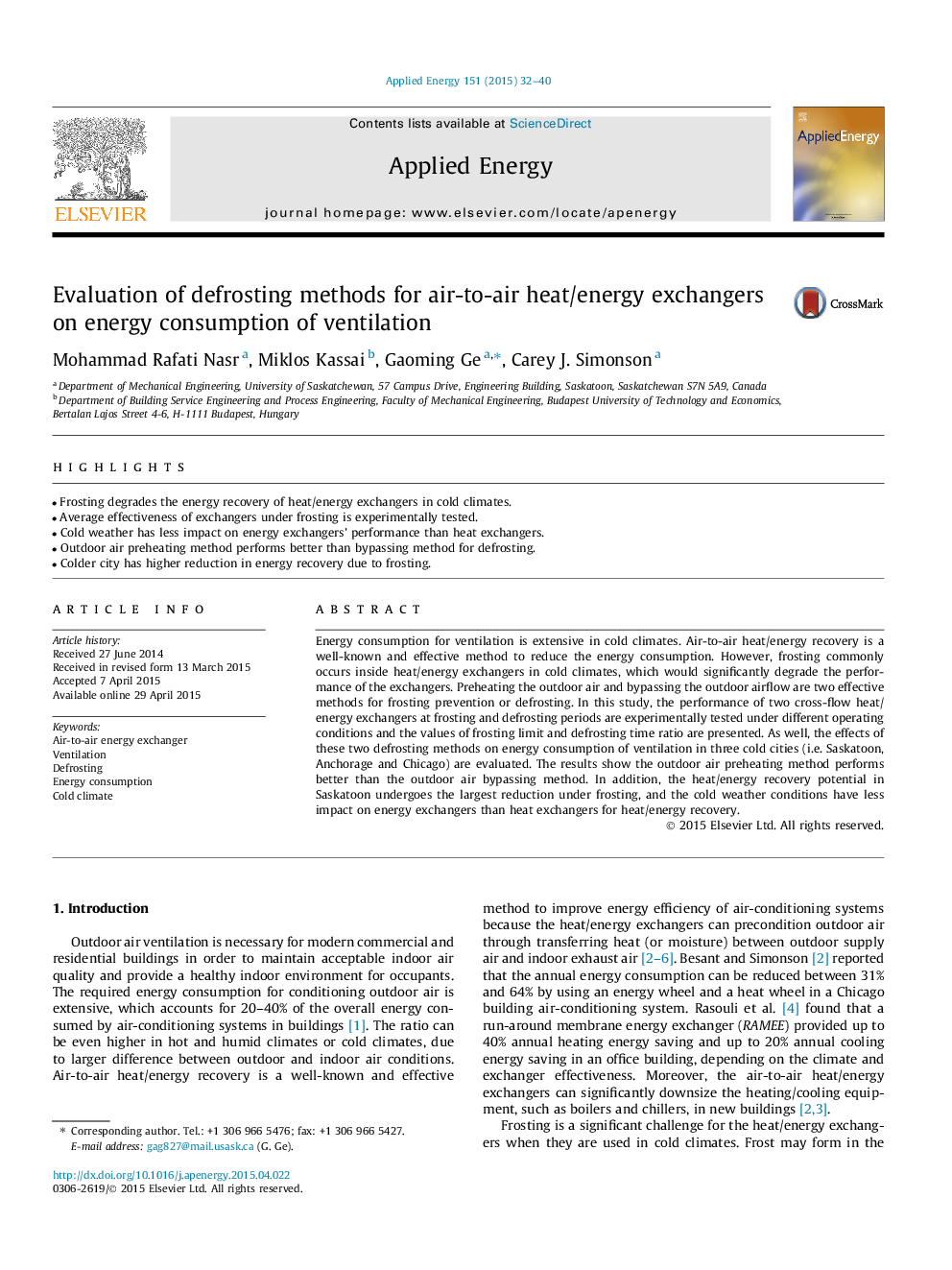| Article ID | Journal | Published Year | Pages | File Type |
|---|---|---|---|---|
| 242453 | Applied Energy | 2015 | 9 Pages |
•Frosting degrades the energy recovery of heat/energy exchangers in cold climates.•Average effectiveness of exchangers under frosting is experimentally tested.•Cold weather has less impact on energy exchangers’ performance than heat exchangers.•Outdoor air preheating method performs better than bypassing method for defrosting.•Colder city has higher reduction in energy recovery due to frosting.
Energy consumption for ventilation is extensive in cold climates. Air-to-air heat/energy recovery is a well-known and effective method to reduce the energy consumption. However, frosting commonly occurs inside heat/energy exchangers in cold climates, which would significantly degrade the performance of the exchangers. Preheating the outdoor air and bypassing the outdoor airflow are two effective methods for frosting prevention or defrosting. In this study, the performance of two cross-flow heat/energy exchangers at frosting and defrosting periods are experimentally tested under different operating conditions and the values of frosting limit and defrosting time ratio are presented. As well, the effects of these two defrosting methods on energy consumption of ventilation in three cold cities (i.e. Saskatoon, Anchorage and Chicago) are evaluated. The results show the outdoor air preheating method performs better than the outdoor air bypassing method. In addition, the heat/energy recovery potential in Saskatoon undergoes the largest reduction under frosting, and the cold weather conditions have less impact on energy exchangers than heat exchangers for heat/energy recovery.
